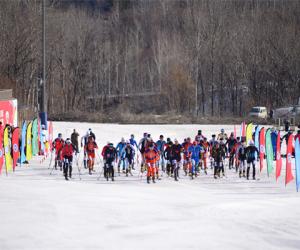
The Regordane is the southern-most section of the historical route that links Paris to Lower Languedoc and the Camargue. It runs from Le Puy-en-Velay, south east of St Etienne to Saint-Gilles-du-Gard to the south east of Nîmes, a distance of 211 kilometres or 140 miles. The jury is still out as to the true origins of the name; and whilst some point to the existence of a road of the same name in Jerusalem, the most likely is that it took its name from the ancient Province through which it passes – la Regordana. This Province corresponded approximately to the triangular area linking the towns of Alés, Pradelles and L’Argentière.
Whilst its existence probably dates back to the dawn of man ( the course follows a natural North-South geological fault-line through a chain of mountains), its importance certainly grew from the year 843 onwards, when it became the most easterly route of a nascent Gaul. It was during this century that the most important staging post along its route, Portes, with its imposing castle, chose Saint Gilles as its patron saint in honour of a miracle that Aegidius supposedly performed there. Pilgrimages to his tomb at St Gilles cathedral are known to have commenced before 1000 AD. < style="TEXT-INDENT: 2em">Some writers refer to The Regordane as the fourth pilgrimage of Christendom during this era, such was the importance of the route, undoubtedly bolstered by its strategic position as a point of departure for St Jacques de Compostella, the Holy Land (St Gilles was a Port at the time) and Rome.
During the Gallo-Romaine era, some referred to it as ‘La Voie des Arvernes,’ linking the strategic cities of Gergovie (Clermont-Ferrand) and Nemausus (Nimes). The XII au XIII centuries saw a growth in the importance of towns, and The Regordane was paved and bridges constructed as the volume of traffic augmented. Responsibility for security lay with ‘Les Seigneurs’ and their castles-cum-toll gates spaced at regular intervals along the route. Safe passage from one staging post to the next was thus assured at a price for those using chariots or mules to carry people and goods along the North-South axis.
The Treaty of 1308 pushed the Kingdom’s frontiers to The Rhone, signaling the end of The Regordane’s ‘Golden Age,’ as the natural advantages of that Valley made it the first choice for most travellers and trade. Climate change in XIV century caused increased levels of humidity. This created the conditions for the birth of The Plague and compounded the lack of investment in the trail’s upkeep, resulting in its gradual decline. The Hundred Years War contributed to its abandonment; and with the continued Eastward spread of the Empire, and the annexation of Marseille, The Rhone Valley’s dominance as the main North/South corridor became insurmountable.
Early industrialism in the ‘Alèsian Basin’ led to a rebirth of interest in this alternative route to the Capital and its markets, with investments made in both macadamized surfaces and The Cévenol railroad. Both follow the same natural fault-lines to Clermont-Ferrand and beyond and were used to transport coal, iron and steel, wine, salt and silk.
The Regordane has had some illustrious travellers along its course over its long history; Kings, including Robert le Pieux in 1031 and St Louis in 1254, who departed from Aigues-Mortes en route to the Crusades, with the decline of St Gilles as a port; the Archbishop of Rouen in mid XIII century on pilgrimage to St Gilles; Simon de Montfort en route to crushing the Cathar Albigeois after the killing of the Pope’s emissary at St Gilles; and Louis XIV’s armies sent to crush the Camisards in The Cevennes some 500 years later.
Some of the route is now tarmaced and a major thoroughfare for heavy traffic. That is to be expected, just as oxen walking on mud tracks gave way to horses trotting on cobbled roads. In a few places the trail has disappeared altogether, and you follow the next best alternative, as close as possible to the original path. The original Regordane Way traces the path that Pilgrims, Romans, traders and armies would have followed en route to St Gilles and beyond. It still offers a unique and authentic experience for those who will accept no compromise other than that of avoiding obvious danger.
Trekking the real Regordane Trail takes you across high volcanic plateau, the schist slopes of the Céze Valley and the dry, stony and flatter surfaces of the Garrigues; through medieval villages and linear settlements, where you admire architecture, vestiges and learn about the history of this sacred route.








